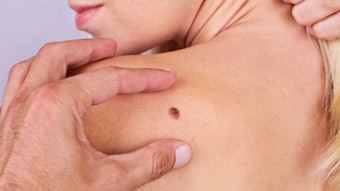
Phase 3 TruE-V Clinical Trial
Incyte announced that The New England Journal of Medicine has published the results from the Phase 3 TRuE-V clinical trial program evaluating ruxolitinib cream (Opzelura) 1.5% in patients 12 years of age and older with nonsegmental vitiligo.
Related: Incyte Announces Presentations at European Academy of Dermatology & Venereology Congress
Phase 3 Data Results
Data from the Phase 3 TRuE-V clinical trial program compiled after the full 52 weeks demonstrates that longer duration of the ruxolitinib cream treatment increases the proportion of patients that achieve repigmentation.
“Incyte is committed to developing innovative medicines for people with immune-mediated dermatologic conditions, and the publication of the TRuE-V results in NEJM is the culmination of years of work to advance science in vitiligo where there were no approved pharmacologic treatments for repigmentation,” said Jim Lee, M.D., Ph.D., group vice president of Inflammation & Autoimmunity at Incyte. “These pivotal results demonstrate significant improvements in facial and total body repigmentation with ruxolitinib cream, and we are proud that these data served as the foundation for the recent approval of ruxolitinib cream as the first and only U.S. Food and Drug Administration (FDA)-approved treatment for repigmentation in nonsegmental vitiligo.”
Key Findings:
- Approximately 30% of patients treated with ruxolitinib cream achieved ≥75% improvement from baseline in F-VASI (F-VASI75), the primary endpoint, at week 24. This number increased to approximately 50% of patients treated with ruxolitinib cream from Day 1 by week 52. Approximately 13% of patients treated with vehicle (non-medicated cream) in one study achieved the primary endpoint in comparison.
- Over 15% of patients treated with ruxolitinib cream improved ≥90% from the baseline in F-VASI (F-VASI90) by week 24, which increased to approximately 30% at week 52. In comparison, roughly 2% of patients treated with vehicle achieved F-VASI90 by week 24.
- The proportion of patients that achieved ≥50% improvement in T-VASI (T-VASI50) by week 52 increased, with the percentage change from baseline in facial body surface area (F-BSA) further improving in patients treated with ruxolitinib cream.
“The primary and key secondary analyses from the TRuE-V program demonstrate the improvement in repigmentation possible with ruxolitinib cream,” said David Rosmarin, M.D., Vice Chair of Research and Education, Department of Dermatology at Tufts Medical Center. “As a physician, this is exciting. Vitiligo has historically been challenging to treat, and these data reinforce the potential that this new medical treatment can have for people who are interested in repigmentation.”











